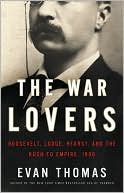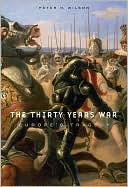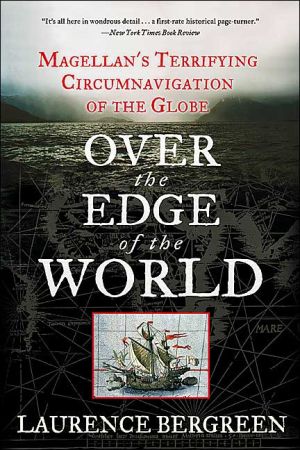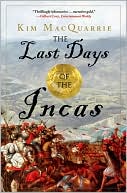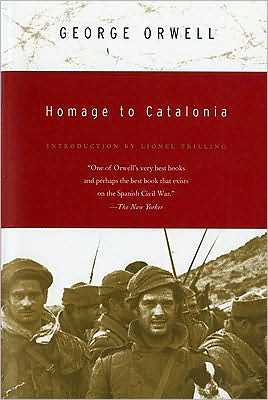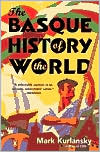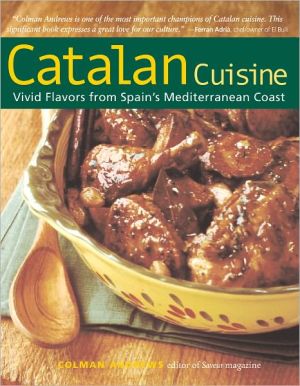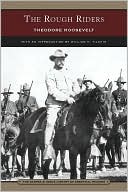Ghosts of Spain: Travels Through Spain and Its Silent Past
“Part modern social history, part travelogue, Ghosts of Spain is held together by elegant first-person prose…an invaluable book…[that] has become something of a bible for those of us extranjeros who have chosen to live in Spain. A country finally facing its past could scarcely hope for a better, or more enamored, chronicler of its present.”—Sarah Wildman, New York Times Book Review\ The appearance, more than sixty years after the Spanish Civil War ended, of mass graves containing victims of...
Search in google:
The appearance, more than sixty years after the Spanish Civil War ended, of mass graves containing victims of Francisco Franco's death squads finally broke what Spaniards call "the pact of forgetting"—the unwritten understanding that their recent, painful past was best left unexplored. At this charged moment, Giles Tremlett embarked on a journey around the country and through its history to discover why some of Europe's most voluble people have kept silent so long. Ghosts of Spain is the fascinating result of that journey. In elegant and passionate prose, Tremlett unveils the tinderbox of disagreements that mark the country today. Delving into such emotional questions as who caused the Civil War, why Basque terrorists kill, why Catalans hate Madrid, and whether the Islamist bombers who killed 190 people in 2004 dreamed of a return to Spain's Moorish past, Tremlett finds the ghosts of the past everywhere. At the same time, he offers trenchant observations on more quotidian aspects of Spanish life today: the reasons, for example, Spaniards dislike authority figures, but are cowed by a doctor's white coat, and how women have embraced feminism without men noticing. Drawing on the author's twenty years of experience living in Spain, Ghosts of Spain is a revelatory book about one of Europe's most exciting countries. The New York Times - Sarah Wildman It is at this moment the end of the Spanish pacto del olvido, the pact of forgetting that Giles Tremlett, the Madrid correspondent for The Guardian, opens his incisive and engaging book Ghosts of Spain. For 25 years, he writes, silence about the past was seen as the price to be paid for the successful self-dissolution of Francoism. In contrast to Chile, South Africa or Argentina, there were no hearings, no truth commissions and no formal process of reconciliation beyond the business of constructing a new democracy. And in contrast to East Germany or the Czech Republic, the mechanics of repression were not revealed or put on trial. In fact, Tremlett writes, it was Franco s own men who would, largely, oversee and manage the transition.
Ghosts of Spain\ \ By Giles Tremlett \ Walker & Co.\ Copyright © 2007 Giles Tremlett\ All right reserved.\ ISBN: 978-0-8027-1574-6 \ \ \ \ Chapter One\ Secretos a Voces \ Sitting in the late autumn sun, in what had once been the Generalísimo's plaza, it was not difficult to imagine what had happened here, sixty-six years earlier. The same crooked, clay-tiled roofs ran down to the wood-balustraded balconies of the buildings around the square. One or two houses were new, and the town hall had been renovated, but the church was, of course, still there. The square remained open on one side, looking out over roof-tops and fields.\ I had come here to listen to a story that, were Spain not a country whose history is perforated with holes of silence and forgetting, would have been laid gently to rest long ago. It was a story that had erupted out of the past, spilt over into the present and proved one thing-the sores of the Spanish Civil War could still, even now, be reopened. Two-thirds of a century had gone by, but they were still there, untended and only partially cured.\ This was my first visit to Poyales del Hoyo. I did not know then that it would be the first of many trips to the fertile valley of the River Tiétar. At that moment, Poyales del Hoyo was just another Spanish pueblo of seven hundred ageing inhabitants. The square was small, neat and, thankfully, unspoilt. Light poured in from the open, southern side and lemon trees peeked around the corner of the church. But, apart from that, the pueblo had little special to recommend it. Today was, in any case, a day for the dead, All Saints Day. There was more bustle in the cemetery than in this square, now called the Plaza delMoral. Not so long ago, however, this had been the Plaza del Generalísimo-the superlative title they had given to Europe's most enduring right-wing dictator, Francisco Franco Bahamonde.\ So here, more or less, is what happened on 29 December 1936. The details have undoubtedly been modified over the years in the minds of those who told it to me. The core of it, however, is true. It is a tale that could be told in a thousand pueblos. But in most of those places, as they were in Poyales del Hoyo, the shameful events of that period remain secretos a voces-'voiced secrets' that, even today, are only whispered in private.\ 29 December, 1936\ The small lorry was parked in the plaza, between the village hall, the squat, solid church and a covered walkway propped up by irregular granite columns. It was a cold December night. Rain was beating down on Poyales del Hoyo, slipping down the cobbles and mud of the steep, narrow streets and into the fields below.\ Perched on the foothills of the Gredos mountains in the central Spanish province of Ávila, Poyales del Hoyo likes to boast that it is protected by them from the extremes of the weather of the Castilian plain to the south. But the rain, when it comes, can be relentless. The water shines the streets and puts a dull, matt grey tinge on the tightly packed, white-painted buildings.\ The night chosen for killing the three women fell a few days after Christmas and just two before New Year's Eve. A small crowd had formed as the Falangists prepared to carry out their work. There was no lack of volunteers. Only one man, a future Civil Guard officer called Miguel Suárez, protested at what was about to happen. He pulled a young cousin of his out of the crowd and dragged him out of the square, but he could not stop the rest.\ The man in charge was Ángel Vadillo. Later to be known by the nickname Quinientos Uno, literally 'Five hundred and one,' he was the leader of the local Falange, the Spanish Phalanx. This party of the extreme right had gathered just 45,000 votes around Spain (and no seat in the Madrid parliament, Las Cortes) in national elections ten months before. But, as the only party approved by General Francisco Franco, it was growing rapidly in the areas conquered since the military rebellion against the Republic had erupted in July. Vadillo eventually boasted that he had killed 501 rojos-thus gaining a nickname which, by most accounts, he was proud of.\ In the early months, the shootings were a regular occurrence. 501 and his fellow Falangists would meet in the bars of Poyales or, seven miles (eleven kilometres) away, in Celestino's bar in Candeleda. There they would fortify themselves with vino de pitarra, the rough red wine made from the dusty, purple grapes that grow in every garden and smallholding along this fertile stretch of the Tiétar valley. Then, after nightfall, they would go to work.\ Tonight it was the turn of Pilar Espinosa, Virtudes de la Puente and Valeriana Granada. The latter, Quinientos Uno's niece Damiana agrees today, was only there because another woman in the village was jealous of her. Valeriana, aged twenty-six, had once been the woman's husband's lover. That was before they had married but, in the cauldron of village life, the jealousy still bubbled away. The woman persuaded her Falange friends to add Valeriana's name to the list of those due to be killed. The other two were Republican sympathisers. Pilar was forty-three. She was one of the few in the village who could read. She had subscribed to the newspaper El Socialista. Virtudes, aged fifty-three, was not just a Republican but also a Protestant. She used to bathe, immodestly, in a pool in the river that still bears her name. These were all things that marked her as a potential enemy of Franco's National Catholic crusade as it swept slowly but inexorably across Spain.\ The night has remained crystal clear in the mind of Obdulia, Pilar Espinosa's daughter. Two-thirds of a century had gone by when she told me what had happened. As soon as she started telling the story, however, she slipped back to that night in 1936-once more seeing the faces of those around her.\ It was the night when she, a fourteen-year-old girl, accompanied her mother in her last hours of life. 'We were already in bed after a hard day in the fields. Suddenly they were beating at the door. There must have been a dozen of them, dressed up in their blue shirts and leather webbing, armed with rifles and pistols. They told us we had to go and speak to the police, that someone had denounced us,' she recalled.\ They were taken to a small warehouse, or storeroom, somewhere in the village. But the only questioning they had was from the local priest-who must have known what awaited them. Before the women, together with Pilar's daughter Obdulia and Valeriana's two-year-old girl, Heliodora, were brought out into the square, the priest appeared. He asked whether they wanted him to hear their confession. Perhaps, like Mosén Millán, the priest in Ramon J. Sender's 'Requiem para un campesino español' ('Requiem for a Spanish Peasant'), he consoled himself with the thought that: 'At times, my son, God allows an innocent to die. He let it happen to his own Son, who was more innocent than the three of you.'\ The Falangists, meanwhile, had gone to get Feliciano Fraile from the police cells. Feliciano was another Republican, but he was also one of the few in Poyales who knew how to drive. He was forced behind the wheel of the small, requisitioned lorry-which the owner, Rufino, had refused to drive. Then the women were brought out and pushed up into the back of the lorry with the men who would kill them.\ Back in 1936, the road out of Poyales del Hoyo hugged the contours of the Gredos foothills tightly, making gentle S-shapes as it travelled slowly towards Candeleda. It snaked its way through pastures, olive groves and orchards of cherry trees or wide-leafed figs. On the right-hand side the Almanzor, 'The Invincible'-the highest of the Gredos peaks named after the warrior-like hadjib (prime minister) of the tenth-century Muslim kingdom of Córdoba, Muhammad ibn Abi Amir-occasionally came into sight. Snow-capped until late spring, it takes on a hazy blue-grey colour on hot days, its edges blurring into the cloudless sky behind. On the other side of the road, low hills led south to the scorched plains of Castile, to Oropesa and, beyond that, Toledo.\ On that rainy night, Obdulia and the three women could not see any of this. They were aware of the lurching of the lorry on the curves, the damp seeping in over the tarpaulin and, I am sure, the fearful certainty of their own deaths.\ The women could have been shot anywhere along the road. But, evidently, the killers wanted to get away from Poyales del Hoyo. The lorry did stop, once, on the way. Obdulia was ordered out. She had time for a quick embrace with her mother. Then she started back through the rain.\ 'My mother gave me a hug, and that was the last I saw of her. I ran back through the rain and shut myself into the house. I still don't know why they let me get off but I don't feel any gratitude. They killed my mother. I have always hated them for it and I always will,' she recalled, bitterness and defiance still in her face.\ The chosen spot was on the final curve just before the road straightens out and runs down the hill into Candeleda, ending under the palm trees of the Plaza del Castillo.\ The locals knew it as 'La Vuelta del Esparragal,' 'the asparagus field curve.' Feliciano, the driver, walked off and left the killers to it. Nobody was worried about him running away. There was nowhere to go. Considerable violence was used on Valeriana, the youngest, who was pregnant. Her skull was smashed. They say that her belly and womb were ripped open with a knife. The other two were shot through the head.\ All three bodies were left out in the open beside the road. A peasant discovered them the following morning. He dug a grave, placed the three bodies in a Z-shape, shovelled the earth back and marked the spot with a stone. He died of a heart attack a few days later. People said it was la pena-the pain of his discovery-that killed him. By that time, however, everyone in Candeleda and Poyales del Hoyo knew the shameful secret of the Vuelta del Esparragal.\ A new year broke at the end of the following day. It brought with it more war, and many more deaths like those of Pilar, Valeriana and Virtudes. The victims were buried in roadside graves, hurled into pits, gullies and ditches or stuffed down wells. The violence, once unleashed, reached extremes of cruelty on both sides.\ The Spanish Civil War, a bloody curtain-raiser for the global war of ideologies that broke out in 1939, did not end for another two and a half years-until 1 April 1939. The country lived under the absolute control of General Franco, Caudillo of Spain, for almost another four decades. Poyales del Hoyo, Candeleda and the rest of the villages strung along the Tiétar Valley lived under the control of those who killed the three women, and those who supported them, for the same period.\ Franco died, still in power, in 1975. The Spanish people, relieved, embraced democracy in record time, consciously fleeing their own brutal past and burying it in silence.\ Fear, anyway, has a life of its own. People here kept the secret of the Vuelta del Esparragal for a quarter of a century more.\ All Saints' Day, 2002\ Sixty-six years later there is freshly dug earth again at the Vuelta del Esparragal. Mariano is down on his knees in the gash of pale, sandy soil opened up by the mechanical digger. He works his fingers through the drying mud and passes a few small, yellowed shards of human bone and tooth into the palm of one hand. With their primitive, heavy-handed working methods, he explains, the volunteers who came here a few days earlier to disinter the three women had not managed to gather everything.\ 'Look, this must be one of Valeriana's teeth. They smashed her skull. We couldn't find all the bits. We looked for the skeleton of an unborn child, but we could not find all of that either,' he explains.\ It is All Saints Day and I have been talking to Mariano on and off on the telephone for several days. His voice had been getting increasingly excited as the date drew nearer. Sitting in a traffic jam outside Madrid-stuck behind family cars packed with people taking flowers to faraway cemeteries on this, the day in which Spaniards so enthusiastically remember their dead-I had called him several times that morning.\ Many of those coming to the funeral, he said, were in the same jam on the motorway leading west out of Madrid towards Badajoz and Portugal. Those already in Poyales del Hoyo could wait. 'It has already taken sixty-six years, so a little longer won't matter. You will be able to recognise me easily. I get nervioso, agitated, when things like this are happening,' he explained.\ On previous days he had told me of his problems with the ayuntamiento, the village council. The authorities there, members of the Conservative right-wing People's Party, wanted nothing to do with the three sets of bones. Mayoress Damiana González was the niece of Ángel Vadillo, the infamous Quinientos Uno who was responsible for the killings. She had left town and declined to attend the reburials. She had, grudgingly, left instructions that a reburial should be allowed if it was 'properly' requested by relatives. But the town was to do nothing special for these bodies. They were, the mayoress reasoned, just like any others.\ Then, two days before the burial, the deputy mayor-a retired Francoera Civil Guard officer-had left a message on Mariano's answering machine telling him there was no room for the women in the cemetery. In Poyales del Hoyo, the old splits between left and right were reappearing with vehemence. Here, at least, the accepted wisdom that, twenty-five years after Franco's death, Spain had definitively buried the trauma of the Civil War was transparently false.\ 'They treated the request with absolute scorn. It was the old right in action again,' said Mariano. He himself was a fully paid-up member of the old left. A former political exile and ex-member of an anti-Franco group, his business card read 'Mariano López-Trabajador y Activista Social,' 'worker and social activist.'\ As the battle of the bodies began, the splits became more apparent. For decades the victims' families and their killers had lived cheek-by-jowl. The reburials brought an end to the silence which here, as in much of the rest of Spain, had kept the Civil War out of people's conversations, if not their minds. And, with that, the embers of ancient loathing had begun to glow again.\ This was something that, according to the accepted mores of Spain's transition to democracy, was not supposed to happen. At the beginning of the twenty-first century Spain was ruled by the People's Party. It was the first openly right-wing party to win power through the ballot box since November 1933. Spain, it was claimed, had put its self-destructive past and reputation for bloody squabbling behind it. It was proud of its normality. 'España va bien,' 'Spain is going well,' was the slogan of the modern, self-confident and fully democratic right-wing party of Prime Minister José María Aznar. Superficially, at least, Spain fitted the phrase. Material progress was visible in a country flooded with new buildings, new roads and new cars. Its young people, taller, stronger and healthier than the older generations, were walking proof of the country's success. Spain had become Europe's model country, a vigorous young democracy with a booming economy and, once more, ambitions to become, however modestly, a player on the world stage.\ The mores of this youthful democracy dictated that the bloody, vicious past had been overcome. Nobody was supposed to meddle with it, let alone suggest there were important, unresolved matters capable of re-arousing-even on a small, bloodless local scale and amongst those old enough or close enough to the victims to remember-the destructive passions that drove Spain to civil war.\ The Civil War was a series of dates in school textbooks. It was a few lines of information to be memorised at exam time and then forgotten. 'In other countries that suffered similar regimes, such as Italy and Germany, young people have been educated about what fascism was, and they are conscious of the horrors imposed by those regimes. That is not the case in Spain,' Vicenç Navarro, a former political exile turned professor of politics, explained.\ (Continues...)\ \ \ \ \ Excerpted from Ghosts of Spain by Giles Tremlett Copyright © 2007 by Giles Tremlett. Excerpted by permission.\ All rights reserved. No part of this excerpt may be reproduced or reprinted without permission in writing from the publisher.\ Excerpts are provided by Dial-A-Book Inc. solely for the personal use of visitors to this web site. \ \
\ From the PublisherPraise for Ghosts of Spain: \ "[Tremlett] paints a rich, multicolored canvas of one of Europe's most fascinating nations."—Entertainment Weekly\ "This well traveled journalist…knows his subject as he ventures through the past to explain the present personality of a country so varied that even in modern times its complicated medieval legacy is part of everyday life." —Washington Times (Ann Geracimos)\ "Tremlett has written a smart and highly readable book that mixes incisive political history with sophisticated cultural reporting."—Seattle Times (Robin Updike)\ "[An] incisive and engaging book….[Tremlett's] sober analysis of how the Madrid train bombings of March 11, 2004...exposed deep fissures in Spanish society is the best report I've read on the subject….[A]n invaluable book. Indeed, since it appeared in Britain last year, 'Ghosts of Spain' has become something of a bible for those of us extranjeros who have chosen to live in Spain. A country finally facing its past could scarcely hope for a better, or more enamored, chronicler of its present."—New York Times Book Review (Sarah Wildman)\ " [An] affectionate, deeply informed tour of the country…. a highly informative, well-written introduction to post-Franco Spain. Mr. Tremlett’s taut recounting of the 2004 train bombings in Madrid makes especially timely reading, with the suspects now on trial."—New York Times (William Grimes)\ "Mr. Tremlett['s]...affectionate yet critical intimacy with the country helps to make this book much more than an ordinary journalistic survey….Extended residency has...allowed Mr. Tremlett to gather off-beat stories distinctly revealing of his adopted land."—Wall Street Journal (Francis X. Rocco)\ "[A] provocative and vividly written book that is part history, part political and social commentary, and part love letter….This book should be in all public and academic library collections on Spanish history and culture." –Library Journal "Tremlett…went native almost immediately upon his arrival in Spain twenty years ago. He wants us to see, hear, touch, and taste exactly why….there are pages here on almost every exemplary, cautionary, and symbolic aspect of Old Spain and New."—Harpers (John Leonard)\ "[A]n evocative, often poignant sojourn through the as-yet uncleared psychic mists of the civil war."—Star-Tribune (Michael J. Bonafield)\ \ \ \ \ \ Sarah WildmanIt is at this moment — the end of the Spanish pacto del olvido, the pact of forgetting — that Giles Tremlett, the Madrid correspondent for The Guardian, opens his incisive and engaging book Ghosts of Spain. For 25 years, he writes, “silence about the past” was seen as “the price to be paid for the successful self-dissolution of Francoism.” In contrast to Chile, South Africa or Argentina, “there were no hearings, no truth commissions and no formal process of reconciliation beyond the business of constructing a new democracy.” And in contrast to East Germany or the Czech Republic, “the mechanics of repression” were not revealed or put on trial. “In fact,” Tremlett writes, “it was Franco’s own men who would, largely, oversee and manage” the transition.\ — The New York Times\ \ \ Library JournalTremlett (Madrid correspondent, the Guardian), a 20-year resident of Spain, takes a hard look at modern life in that country, delivering a provocative and vividly written book that is part history, part political and social commentary, and part love letter. This is not the picture-postcard Spain of colorful fiestas, sandy white beaches, and tapas bars. This Spain tolerates corrupt government officials, is overwhelmed by hoards of tourists and uncontrolled development along its once pristine coastline, and is unwilling to address the atrocities of the civil war and Franco's oppressive regime. Even so, Tremlett is clearly caught up in the romance that is Spain. His search for authentic flamenco takes him to a prison and the barrios of Seville, and he is intrigued by the differences among the people in Spain's many regions, although his enthusiasm for Basque cooking is somewhat tempered by the possibility that its best chefs may be paying protection money to Basque separatists. This book should be in all public and academic library collections on Spanish history and culture.\ By Deborah Bigelow, Director, Leonia P.L., NJ\ \ —Linda M. Kaufmann\ \

